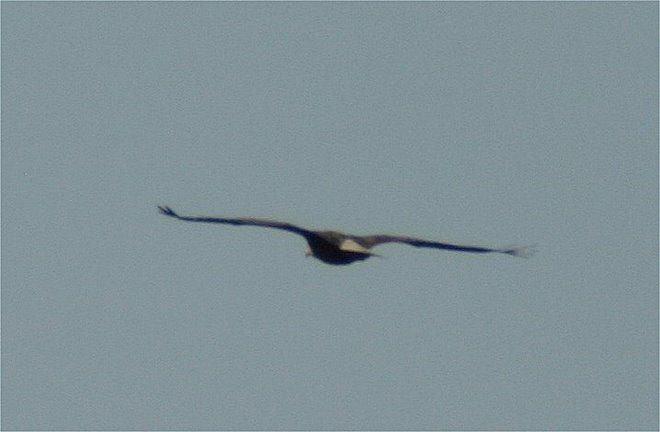Hawk Migration Spring and Fall
Apr 30, 2008
Hawkwatchers everywhere should realize that their purview consists entirely of examining, primarily with the naked eye, a two to three mile patch of sky. Considering that there are less than one hundred consistently manned hawkwatching sites on the North American Continent this examination of the hawk migration is pathetically small. It is minuscule to the point of being laughable insofar as any studies of hawk migration with a desire for an accurate monitor of hawk populations is concerned.
We all flock to the lookouts in the Fall of the year to witness a sample of the breeding populations that are heading to a territory that is more conducive to the survival of those breeding hawks. And, we all dutifully record those numbers of southbound migrants with the thought in mind that we are indeed making a contribution to the preservation of the environment of migrating hawks and in a larger sense the ecology of the vertebrates of the earth including ourselves.
Excuse me if I am more convinced that we are only concerned with having a good time on watch and that we are collecting our numbers for the simple reason that we are highly competitive with those who dared to attend a lookout different from ours. Well every game, sandlot or not, needs a referee and a record.
It is the two mile purview that bothers me as that narrow view is severely lacking for the Fall migration. But, to completely ignore the Spring migration just blows my mind. If one is truly interested in hawk migration he should be willing to move about in the fall in order to intercept more migrants than the the nearest site. If one is truly interested in hawk migration one must participate in a hawkwatch during the spring. There is no reason to believe that every hawk on each day in the fall will pass by the selected site and there is no reason to believe that the breeding hawks will return by that selected site in the spring.
For those who are truly interested there is a great menu of selections for you to consider in order to truly contribute valuable data to the hawkwatching record. Take the Candler's Mountain record and the weather conditions that produced the flights there and compare them with what was found at Harvey's Knob. That should provide a clue to where the hawks are flying on their southbound journey.
Consider the spring migration movement. For some thirty years it has been considered at Harvey's Knob that the spring migration produced lower counts because of the mortality rate during the fall migration. Such a notion was based, in part, on the fact that the Hawk Mountain counts were extremely lower in the spring than in the fall. Permit me to submit one question: Where is it written that the migration is symmetrical? Those of us in the southeast know to concentrate our hawkwatches on NW winds in the fall. And, we found early, that NW winds produce no hawks in the spring. Our solution to this pattern was to abandon spring watches.
During the spring migration the multitude of breeding hawks that wintered in the tropics are indeed migrating symmetrically through Central America. They are exploding out of Mexico in late March and early April. They are drifting around northward in the southern and central plains. Then a cold front passes through that territory and spawns northwest winds across that territory. Those winds blow across the western front of the Appalachian Mountains. Playing those winds (there is no such thing as a wind blown hawk) the northbound migrants gather along the western slopes of the Appalachians in Tennessee, Kentucky, and West Virginia. There are two mountains in this purview that reach into Virginia: Pine Mountain on the border of Virginia and Kentucky that hosts the Breaks Interstate Park and Clinch Mountain a bit eastward hosting a VDGIF Wildlife Management Area. As a last resort for spring migration on NW winds there is Peter's Mountain near Bluefield, WVA.
It is obvious that hawkwatchers need to expand their scope if they are truly interested in learning the behavior of the hawks during migration. The above suggestions will go a long way toward such a conclusion.
Yes Virginia there is a viable spring hawkwatch.
Dave Holt

No comments:
Post a Comment